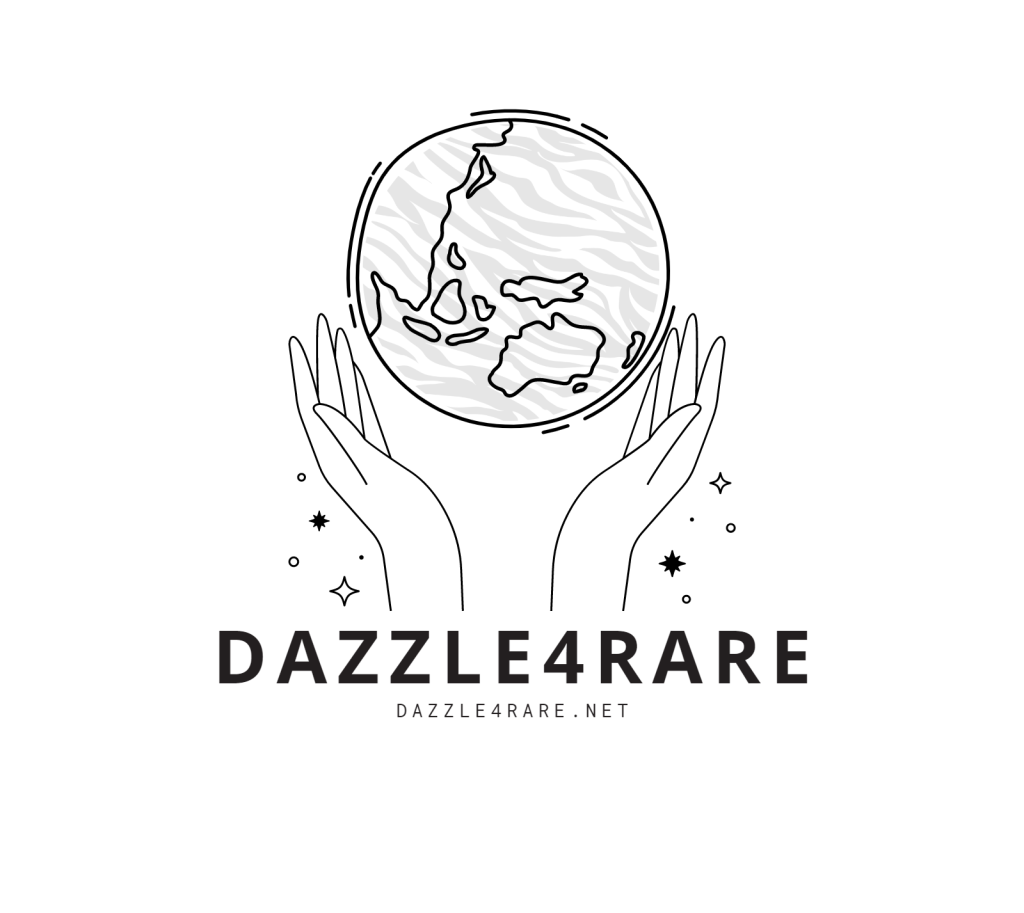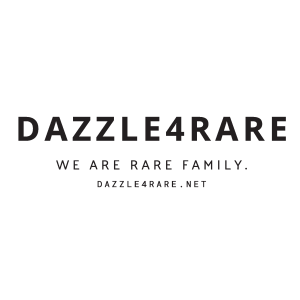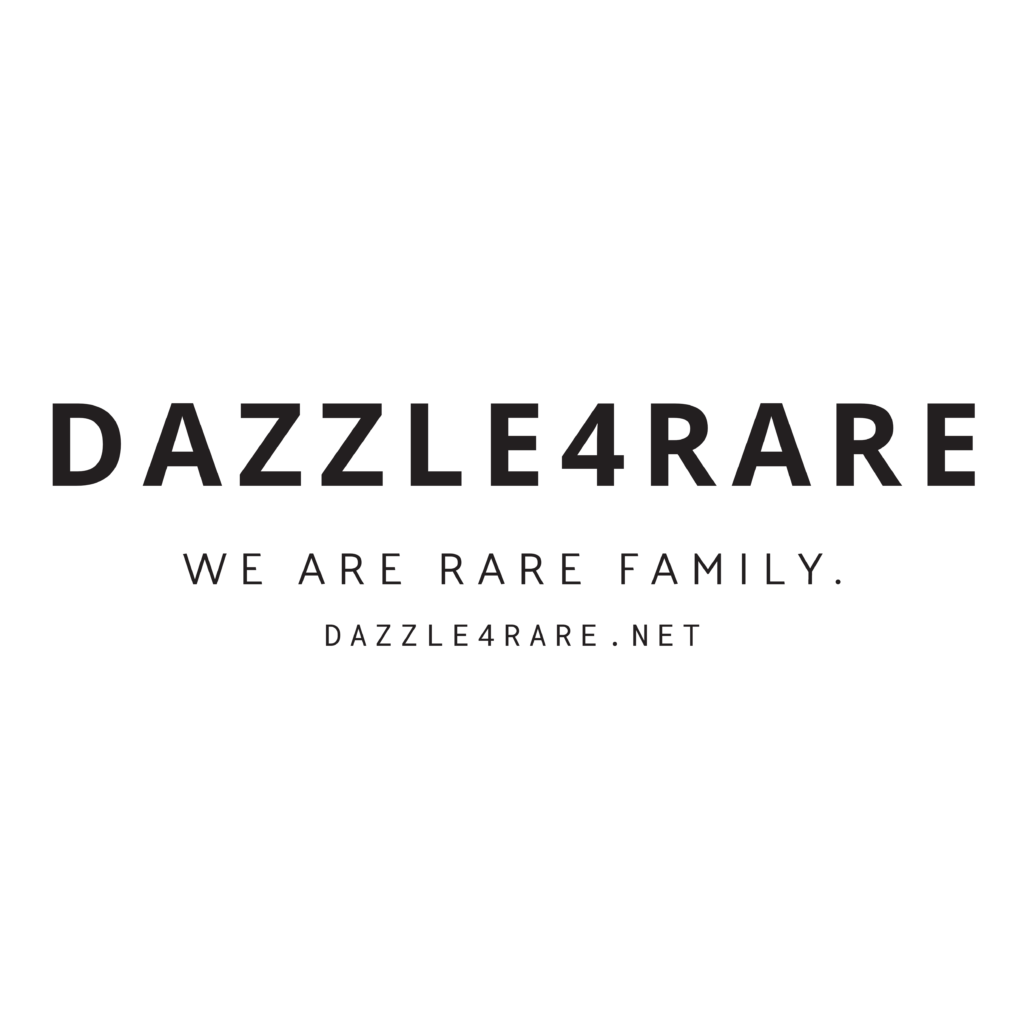Who is Kimberly?
If you have followed Dazzle4Rare or my personal journey in various forms, much of this may be familiar to you. For those who do not already know me, I’m going to share a very difficult, true story about how I became so passionate about not only rare disease but the lives of undiagnosed, rare, chronically ill, invisibly ill, and disabled individuals around the world.
The Readers Digest Version
The short version is that I have lived with chronic health problem since I was a child. I transitioned into adulthood with my situation largely unchanged until 2002. In February of 2002, I came down with my usual bronchitis. Not an uncommon event for me at all as I had constantly had ear infections, UTIs, viral infections, tonsillitis, and other frequent guests in my life. What was different is that I developed a 6 week migraine which became personality changes, vision changes, and myoclonic epilepsy.
I did not know what was happening at the time. I went to my doctor about the myclonus which I thought were convulsions. I saw a neurologist, was given a preliminary diagnosis of myoclonic epilepsy, and sent on my way. There was no follow-up plan, no medications, and no path to recovery.
Almost concurrent to the mirgraine and myoclonus were sudden and very noticeable personality changes. I soon developed crippling anxiety, depression, and paranoia. These changes were noted many times by co-workers and friends but I chalked it up to a recent stressful event in my life, not tying it to my recent lengthy bronchial infection and sudden myoclonus.
Some months passed and the mental health side of my sudden illness was too much to bear. I left my job abruptly, stayed in my apartment, afraid to go out side alone, and was seen by a psychiatrist who diagnosed with with five distinct mental health conditions including bi-polar disorder, generalised anxiety disorder, and post traumatic stress disorder. I was put into group therapy and given a litany of constantly changing psychiatric medications, none of which had an impact on my increasing mental deterioration.
Things Just Got Worse
After persisting some how in a state of anxiety, depression, and paranoia, I made the choice to take my life. Clearly, I was not successful. It was a choice made in the grips of an illness that the time (and to this day) had no diagnosis. I can look back more than 20 years later and have compassion for myself, knowing that I was very ill at that time and did not have any framework for helping myself out of a very dark time.
After ingesting hundreds of tablets of anti-depressants that had failed, anti-psychosis tablets, anti-epileptic medications, etc, I was in and out of consciousness for three days. I was taken to the ER in a state of altered mental status after my step mother found me acting strangely. I was transported to a local hospital where my family was told my life was in the balance and sudden shock or emotion could cause a heart attack which could kill me. I was very well out of my head at that time. I was only aware that I could not vomit after ingesting a liquid to induce vomiting and I was aware that I had flatlined after my heart rate exceeded 200 beats per minute.
Despite my medical, physical, and mental vulnerability, I was released the next morning. My family was instructed by the attending ICU doctor to put me in state run psychiatric care. I no longer had insurance. I could not stay at the hospital as I could not pay and I could not access insurance-supported mental health care. So my parents drove me to the Arizona State Psychiatric Hospital. After many hours of waiting, hearing patients screaming in the halls, and the utter despair that filled the waiting area, I convinced my parents to take me home. I was dropped off in my quiet, lonely apartment, left alone with my thoughts.
Things Take Another Turn
Shortly after I was dropped off at my quite apartment, alone with my aching chest and head, I lost my apartment as I was unable to pay rent. At this point, I’d lost my job, my healthcare insurance, and now my home. Just 6 months before I was on track to succeed as a Business Analyst at a successful company. My success and potential all vanished before my eyes.
I did not receive follow-up care from the State of Arizona. I did receive a document from the State indicating that I was severely mentally ill and not capable of self-care. I felt alone and scared. My fear and still very clouded head helped to push me away from all my friends and any one who might have some sense of empathy for the ordeal I was going through. I lost many friends and my family bonds were on tenuous ground as they believed that I was like John Nash in the film, “A Beautiful Mind.” They believed that bi-polar disorder was similar to what John Nash went through and that I was perhaps beyond any hope. That is how my father explained it to me at the time.
I did manage to find housing. I did manage to get a job. I did manage to claw myself out of a dark place and into at the very least, a shady spot with access to the sun.
Here We Go Again
After landing a new job for which I had a lot of enthusiasm, I again started to experience myoclonus. I had experienced some seizure free time when I was on Depakote (Valproate) which was used to treat the bi-polar disorder I did not have. It had the unintended and unexpected side effect of treating my epilepsy. But once I ran out of insurance and access to healthcare, I lost my ability to access Valproate and soon my myoclonic epilepsy was back.
Eventually I would get healthcare access again and through an epileptic colleague, I was able to see a new female neurologist who confirmed my epilepsy diagnosis. It would seem that this confirmation would be the end of the story but it is far from the end. As the years went by, I developed other symptoms affected my digestive system. I would suffer severe abdominal pain and defecate pints of blood with seemingly no reason. I was diagnosed with GERD and sent home with OTC acid reflux tablets.
Years passed as I was in and out of the hospital, being sent home quickly every time being told to follow up with my general practitioner. To her credit, she did take me seriously and did listen to me. She was unfortunately unable to cope with the barrage of symptoms and tests, eventually telling me I must have a rare condition and that my family would find out the results on my autopsy.
Expensive Search for Answers
With a good paying job and steady health insurance, I was able to access the Mayo Clinic Arizona. This time in my life is not only upsetting to discuss, but also lengthy and expensive. What I can say is I was not taken seriously. I also found that in the face of obvious EEG evidence of epilepsy and encephalopathy, I was told they didn’t get my prior EEGs (not true but perhaps the neurologist simply did not look.) I was also told I had fibromyalgia and that it was the cause of my myoclonus.
While many things were flagged up during the two weeks I spent at Mayo Clinic, sadly the follow-up care did not come. Many issues were flagged up about my spine, indicating I have kyphosis and dextro scoliosis but again, there was no follow-up care (then or now).
After my general practitioner reviewed the Mayo Clinic reports, she was herself over whelmed by the information about my spine and I never did get a referral for care for the kyphosis or dextro scoloiosis. She did feel I needed another more comprehensive neurological work-up so she sent me to a supposed multiple sclerosos specialist. This appointment did yield good diagnostic information but unfortunately the neurologist had already been skeptical there was anything wrong to start with and chose to have his nurse report that “everything was normal” though I found many years later, it was not. I was at the beginning all over again but this time with my epilepsy diagnosis taken away and replaced with fibromyalgia.
Moving Out
In 2012, I had decided I had been through enough in my ongoing diagnostic odyssey. I was told I needed to see a specialist for hyperlipemia but I decided not to. I was also to have a sleep study which I also did not go through with. I was told I had two calcified nodules on my thyroid and even that lead to nothing. I was tired and fed up. I decided that if indeed this was all in my head, I would just push past it alone.
I got engaged in 2012, married, and moved to England. I had painfully withdrawn from all my medications and was determined not to be sick any more, as if that was a choice I could make. I quickly found out I was pregnant and decided the best thing I could do is get all my records form the USA and ensure I had access to them just in case. During that time, I found some key items that stood out in my results over a decade. I sat down with a decade of medical records and imaging and put together a spreadsheet of my diagnoses and symptoms. I then narrowed things down to the things that seemed most pressing and well documented. I literally plugged these results from my medical records into Google, hoping some condition would come up.
Now, this is the part of the story where we can all laugh because who has not referred to “Doctor Google” at some point in their life as a patient?! This was a first for me in 2013! Searching for phrases like “high anti-thyroid titre”, and “generalised slowing on EEG” did yeild a result to a condition, but only one. The condition was Hashimoto’s encephalopathy, a condition of the brain which causes multiple neurological deficits and notably is marked by a high anti-thyroid antibody titre and generalised slowing on EEG. Back then, one a handful of search results existed.
My Brain is also on Fire
This lead me to read everything I could. I quickly came to find some Facebook support groups for people with this condition who I spoke to often. I read the book, “Understanding Hashimoto’s Encephalopathy” in a day. I discovered the book, “Brain on Fire” by Susanah Cahalan as well, devouring it in another day as my baby slept. My experience in my early 20s was much like Susanah’s except it was 8 years prior to hers. In my experience, I did not deteriorate into mutism but I did deteriorate mentally as she did and I did spent time in psychiatric care on a few inpatient holds, both forced and voluntary.
I cried as I read her book. I felt hopeful but also daunted. I devoted a lot of my time as a new mother feeling more sure than anything that I indeed had then or did still have Hashimoto’s encephalopathy also known then as Steroid Responsive Encephalopathy Associated with Thyroid Antibodies. I eventually plucked up the courage to write a letter to a general practitioner in our area and request a neurological work-up I’ll save you time and eye strain by saying that went badly. Even presenting studies, diagnostic evidence from my records, and anything else I thought might help, the gentleman who saw me was dismissive, rude, had called people like me “poly symptomatic nightares”, and admitted my EEG showed encephalopathy but denied epilepsy, then changed his mind saying focal epilepsy was likely, then decided not to provide medication for the focal epilepsy, and it was all dropped quickly.
Giving Everything
I accepted I would never get a diagnosis of HE/SREAT. I accepted that I lived in a time and place not ready to hear me. The diagnostic criteria for autoimmune encephalitis was released a few years ago, as you can read on Lance Neurol, but despite having met it in 2008 with CSF positive for protein indicating inflammation, slowing on EEG and other abnormalities, and high antibody titers, it was again suggested I was distressed and that autoimmune encephalitis is rare and I looked well so it could not be that.
I threw myself headlong into volunteering for the organisation known as the Hashimoto’s Encepahlopathy SREA Alliance (now known as Hashimoto’s Encephalopathy SREAT & Seronegative Encephalitis Alliance aka HESA.) I won’t go into the tasks I did in great detail but I played a large role in publishing their second book as well as creating their old website, curating a library of medical studies, taking on incoming communication, and handling social media. It was during the production of the second book that I created Dazzle4Rare.
Why Do We Dazzle4Rare Anyway?
In 2016, my mother and her twin had both died fairly young. I was in Arizona with my young son trying to sort through their aftermath, what was left of them in this life. I threw myself into trying to get media attention for the many children suffering with HE/SREAT and a missing young man with HE/SREAT, who was later found dead in Utah. I needed their stories to be heard as much as I needed mine to be heard. I needed people to care about them as much as I wish I felt peopled cared about me. For everything I could not do for myself, I needed to do for them. I spent that painful summer building the website, working on the book planning, and creating ideas to promote HESA to the world for the good of patients.
I found that getting anyone at all to care about another person’s suffering is akin to climbing Everest with a pair of wellies and a rain coat. It was hard. However, suddenly at 3 am while scrolling Twitter, it came to me we needed a hashtag that people could unite under. I called it #dazzle4rare as a group of zebras is called a dazzle. Patients with rare conditons are also called zebras, alluding to their unlikely appearance when one hears hooves – it’s a medical metaphor for rare versus common conditions.
We started humbly and reached over 152k Twitter impressions. I went on to create the Facebook event as well as carry the event across other platforms. You can learn more about the even itself all over this website. To get to the point, we dazzle because if we don’t join together, community with community, our “hoof beats” are likely to be lost forever in the overwhelming sound of horses. There are more non-rare people in the world, even though there are about 400 million rare people worldwide.
Goodbye to Old Friends, Hello to #TeamDazzle
In 2018, myself and Dazzle4Rare said goodbye to our friends at HESA in terms of my work for them. It was time to move on and take D4R to new heights for everyone. I also had become depressed seeing so many people come to the group with a diagnosis when I still could not achieve one myself. I was resolved to help people if I could not help myself.
This website started shortly after that time and has been largely neglected as the movement had been more about the connections we make than a simple website. However, in 2021 that changed so much. We we able to welcome over 25 organisations, advocacy groups, and advocates. It has been and was a tremendous, uplifting event.
Where am I now?
As I write this, Dazzle4Rare year five is winding down. I’ve been awakened by the amazing Instagram live conversations that our friend and teammate, Whit has had with Maddy from HESA, Lisa and Becky from Central Pain Nerve Center, and with RARE., a lifestyle brand based in the USA. These conversations have awakened in me a need to strengthen my resolve, make more time for the D4R communities in the “off season”, and make more time to help other organisations stay afloat.
I was eventually diangosed with hypermobile Ehlers Danlos syndrome, Postural Orthostatic Tachycardia syndrome, Type II Diabetes, and had long been diagnosed with fibromyalgia, migraine, early onset autoimmune thyroid disease (diagnosed in my early 20s), and a load of other findings that themselves are not a diagnosis but stand as unanswered questions.
I take daily medication for myoclonus however now in my 40s my myoclonic jerks are mostly well controlled. I live with as yet undiagnosed nerve pain in my face and mouth, unusual fatigue and difficulty breathing that has been tied to PoTS but with no common sense or scientific explanation why my otherwise previously stable PoTS becamse incredibly debilitating, beyond anything I’d ever experienced.
I’m not regularly followed by a medical team in the UK. I was released from rheumatology after my hEDS diagnosis. My cardiologist passed away in 2019 of cancer and I’m not longer under cardiology care for PoTS. My thyroid disease is treated with a set-and-forget dose of thyroxin. I take many medications, often adjusting or switching as my newer symptoms of incredible, easy fatigue and difficulty breathing along with nerve pain in my face have not been formally diagnosed. I’ve been released from pain management as they can do nothing more for me. My pain is not adequately controlled but I’m currently at a stand still.
I often feel how can I advocate for better healthcare for undiganosed, rare, chronically ill, invisibly ill, and disabled individuals if I myself cannot get adequate care?
The answer is surprising. I can because I’m one of those people and we are all still struggling daily to access healthcare that takes care of our needs, without demeaning, demanding, or denying us and our symptoms. While I may also struggle, it is incredibly important to me to continue to work with others to assure future generations a brighter future with better diagnostics, better treatment, and better outcomes.
If we look at history, leaders in other times and of other movements did not live to see the fruit of their labours. I suspect that I may not see a day when the things that make my life harder are named and called into the light. I accept that, feeling strongly that no one else should have to accept that. I make it my life’s goal and mission that the next patient should never feel so alone, unheard, and to go untreated. We can do better than that as a team.




